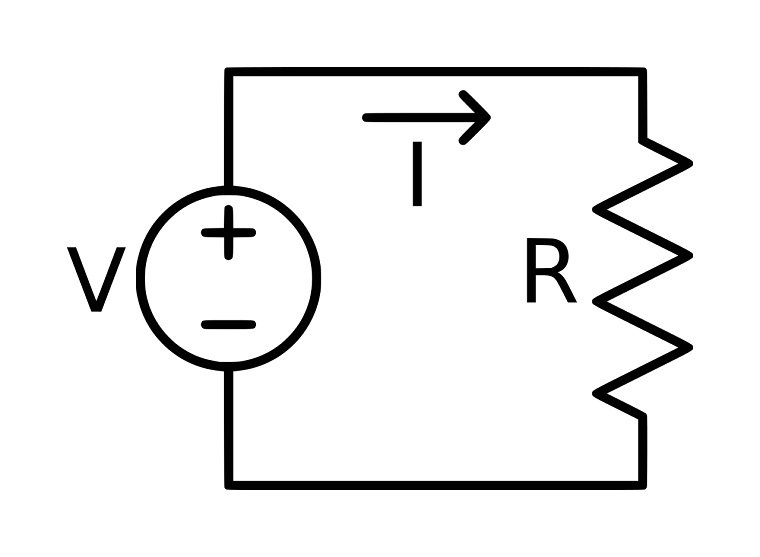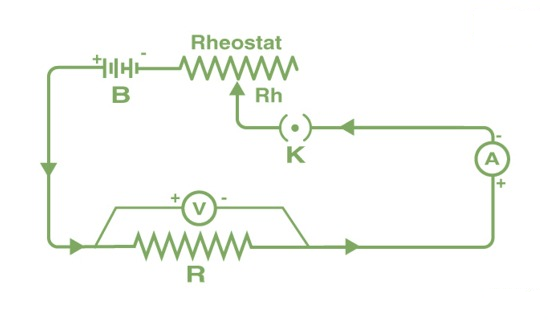Ohm’s Law states that the current flowing through the conductor between two points in an electrical circuit is proportional to the potential difference (e.g. voltage or voltage drop); It is inversely proportional to the resistance between two points.
or
Here, I is the current ampere, V is the potential difference between two referenced points in volts and R is the circuit variable (volt/ampere) measured in ohms and called resistance. Potential difference is also known as voltage, and the symbols U, E, or emf (electromotive force) are sometimes used instead of V.

What is Ohm’s Law
Ohm’s Law was discovered by German physicist Georg Simon Ohm. This law states the relationship between current, resistance and voltage in an electrical circuit. This relationship between current (I), voltage (V) and resistance (R) was given by Georg Simon Ohm in 1827. While performing his experiment, he found that the product of the current flowing through the conductor and the resistance of the conductor determines the voltage drop.
Ohm’s law states that the voltage on a conductor is directly proportional to the current flowing through it, provided that all physical conditions and temperatures remain constant.
According to Ohm’s Law, the current flowing through the conductor is directly proportional to the voltage in the circuit, that is, there is a ratio V ∝ I. Thus, Ohm’s Law provides the basic relationship between applied voltage and current flowing through the conductor. It is the fundamental law that helps us in dealing with the electrical circuit. Ohm’s Law states that current follows a linear relationship with voltage.
Ohm’s Law Formula
Ohm’s law states that the voltage across a conductor is directly proportional to the current flowing through it, provided that all physical parameters and temperatures remain constant.
Ohm’s Law is expressed as:
V ∝ I
or
Here,
R: is the Constant of Proportionality known as Resistance,
V: is the applied Voltage and
I: is the current flowing through the electrical circuit.
The above formula is used to calculate the current and resistance of the devices.
According to Ohm’s law, the current passing through the conductor is;
Similarly resistance can be defined as:
Ohm’s Law Unit
There are three physical quantities that are associated with the Ohms Law that include,
- Current
- Voltage
- Resistance
The table added below shows the various symbol and their unit used.
| Physical Quantity | Unit of Measurement | Unit Abbreviation |
|---|---|---|
| Current(C) | Ampere | A |
| Voltage(V) | Volt | V |
| Resistance(R) | Ohm | Ω |
Ohm’s Law Equations
Ohm’s law provides three equations which are:
here,
- V is the voltage,
- I is the current, and
- R is the resistance.

Ohm’s Law Pie Chart
To better understand the relationship between various parameters, we can take all the equations used to find the voltage, current, resistance, and power, and condense them into a simple Ohm’s Law pie chart as shown below:




